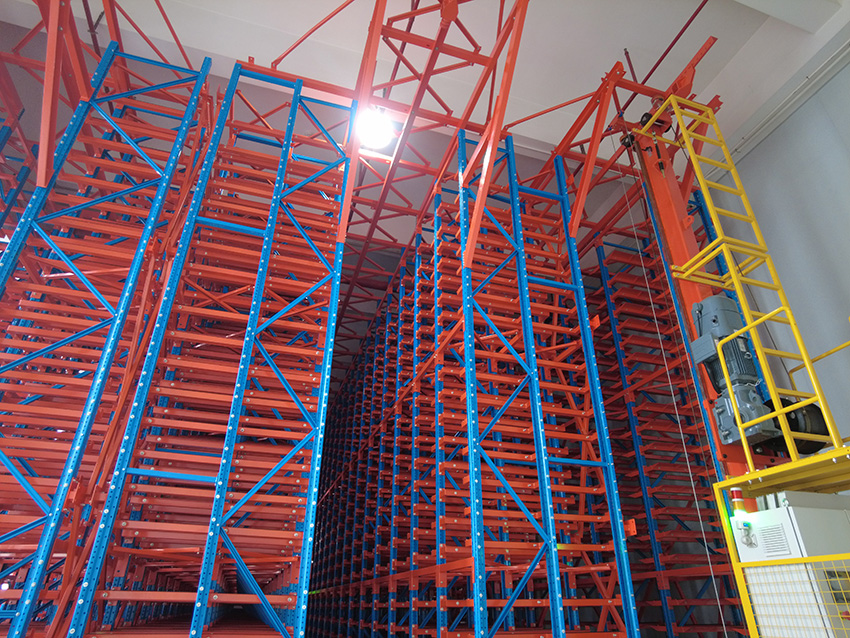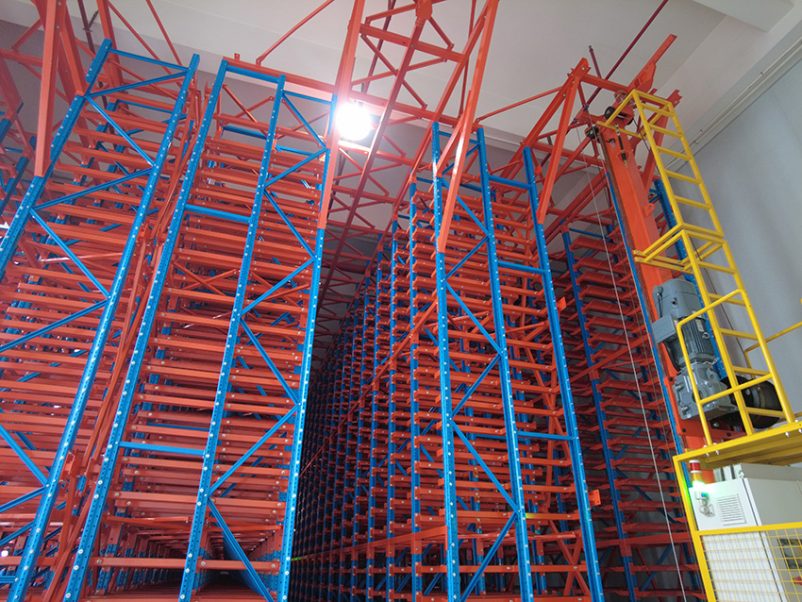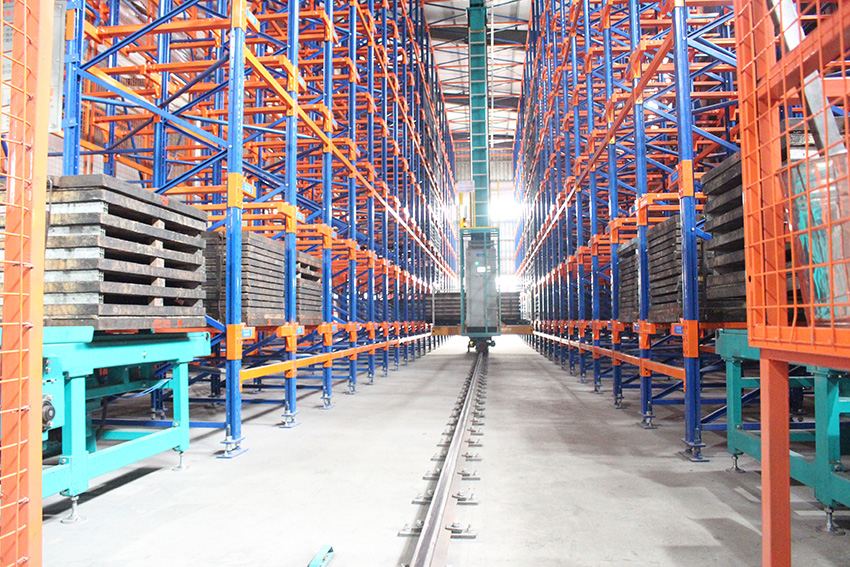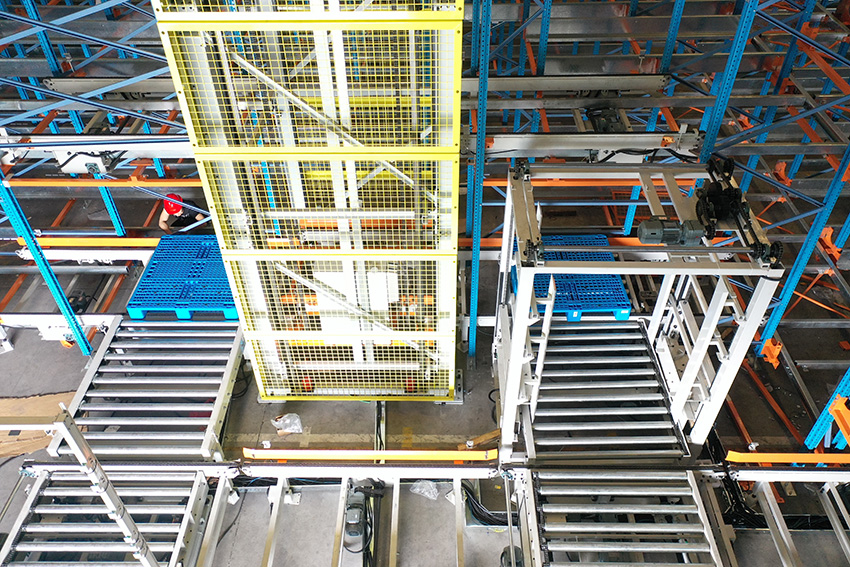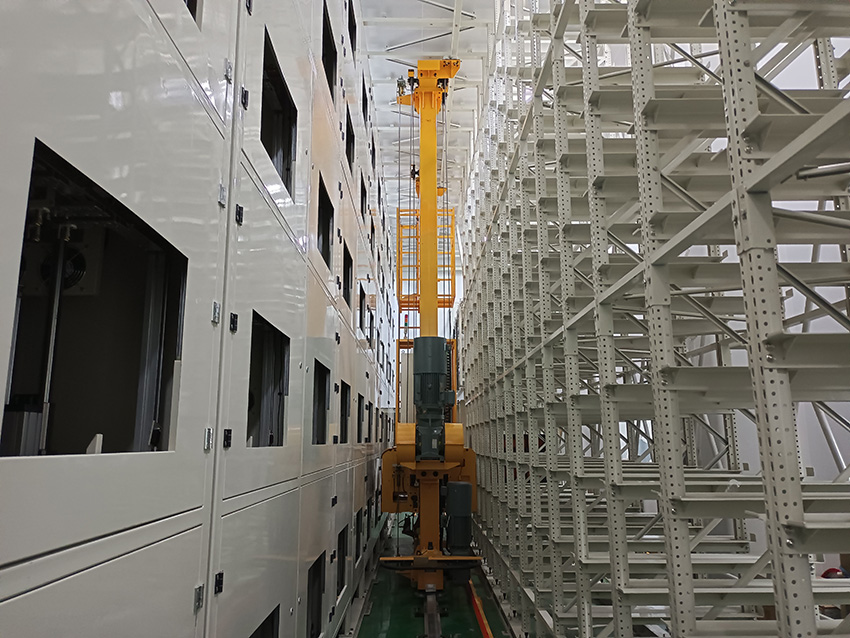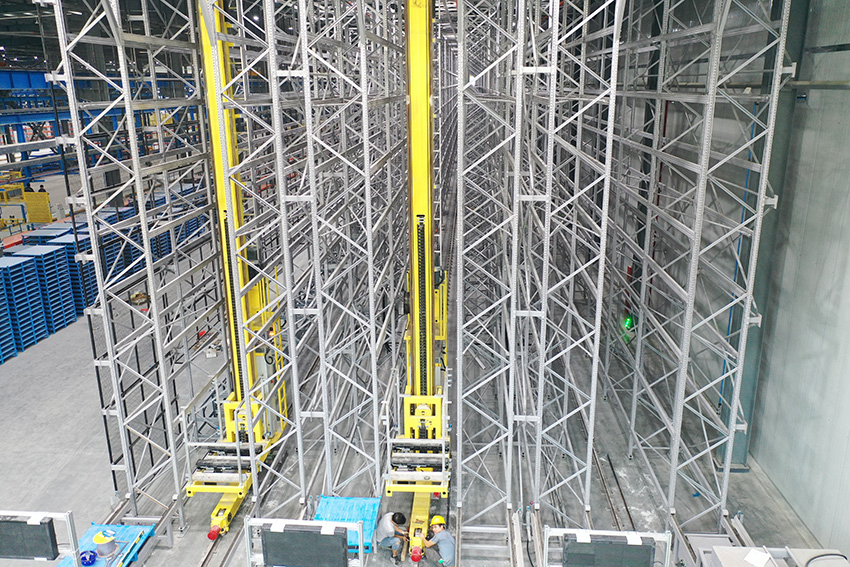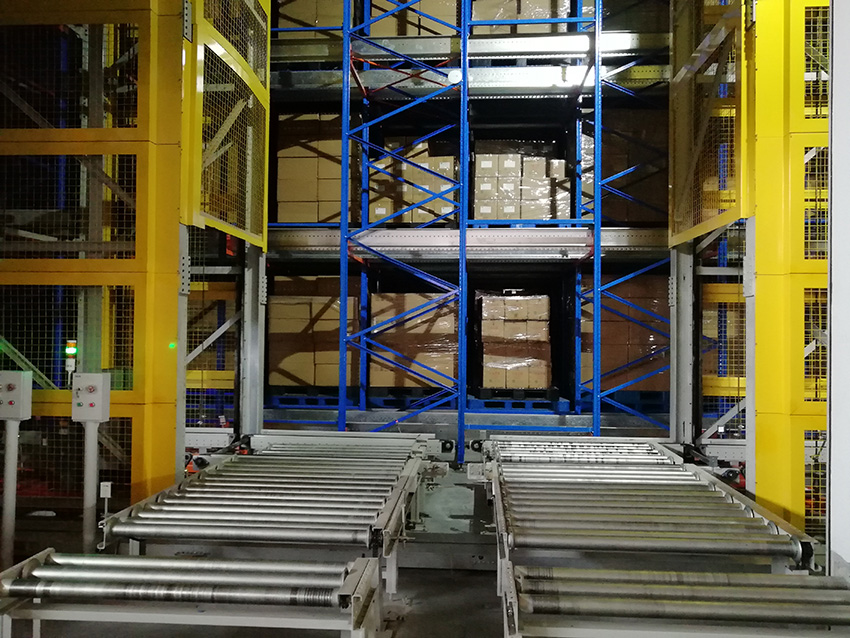1. Project Background
Customer Requirements: A precision mold manufacturer needs to build a smart high-density warehouse to meet the following requirements:
Storage Requirements: Over 2,000 SKUs (including injection molds, stamping molds, and die-casting molds), supporting mixed storage of mold sizes (500×300×200mm to 2,000×1,500×1,000mm) and materials (steel/aluminum/composite materials);
Efficiency Goals: Average daily order processing of 800 orders, with a peak throughput of 200 sets per day;
Compliance Requirements: Earthquake-proof and moisture-proof (humidity ≤40%, vibration ≤0.1g), rust-proof (nitrogen protection), compliant with ISO 9001 and ASME standards;
Cost Optimization: Reduce reliance on manual labor and lower the goods damage rate to below 0.1%.
2. Technical Highlights
Precision Mold Protection Design:
Silicone rubber buffer pads (Shore hardness 50A) are installed on the stacker forks, with a load capacity of up to 5 tons. Vibration sensors monitor the handling process in real time (accuracy ±0.01g).
shelf panels use anti-vibration spring damping structures (natural frequency ≤2Hz) to reduce mold cavity wear during transportation.
Precise Environmental Control:
The temperature-controlled zone is equipped with an inert gas fire suppression system (heptane), with a response time of ≤30 seconds;
Anti-static shelves (surface resistance ≤ 1×10⁶Ω) prevent static electricity from causing dust to adhere to aluminum molds.
Efficient sorting strategy:
WMS combines batches based on mold material and application (e.g., automotive molds + electronic molds combined orders) to reduce shuttle cart idle rates;
AGVs operate in a multi-vehicle collaboration mode, improving cross-zone transportation efficiency by 50%.
